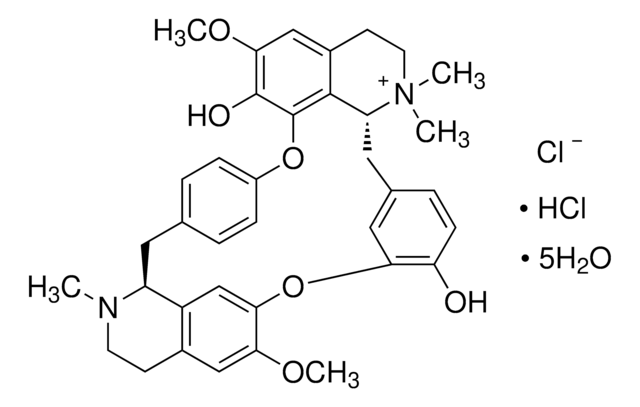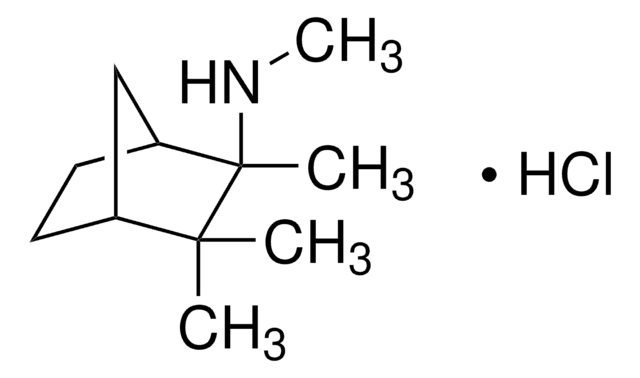A0325200
Alcuronium chloride
European Pharmacopoeia (EP) Reference Standard
Synonim(y):
N,N′-Diallylnortoxiferinium dichloride
About This Item
Polecane produkty
klasa czystości
pharmaceutical primary standard
rodzina API
alcuronium
producent / nazwa handlowa
EDQM
Zastosowanie
pharmaceutical (small molecule)
format
neat
temp. przechowywania
−20°C
InChI
1S/C44H50N4O2.2ClH/c1-3-17-47-19-15-43-35-9-5-7-11-37(35)45-26-34-32-24-40-44(16-20-48(40,18-4-2)28-30(32)14-22-50)36-10-6-8-12-38(36)46(42(34)44)25-33(41(43)45)31(23-39(43)47)29(27-47)13-21-49;;/h3-14,25-26,31-32,39-42,49-50H,1-2,15-24,27-28H2;2*1H/q+2;;/p-2/b29-13-,30-14-,33-25-,34-26-;;/t31?,32?,39-,40-,41-,42-,43?,44?,47?,48?;;/m0../s1
Klucz InChI
CPYGBGOXCJJJGC-ZHNYPADJSA-L
Opis ogólny
For further information and support please go to the website of the issuing Pharmacopoeia.
Zastosowanie
Opakowanie
Inne uwagi
Hasło ostrzegawcze
Danger
Zwroty wskazujące rodzaj zagrożenia
Zwroty wskazujące środki ostrożności
Klasyfikacja zagrożeń
Acute Tox. 2 Oral
Kod klasy składowania
6.1A - Combustible acute toxic Cat. 1 and 2 / very toxic hazardous materials
Klasa zagrożenia wodnego (WGK)
WGK 3
Temperatura zapłonu (°F)
Not applicable
Temperatura zapłonu (°C)
Not applicable
Wybierz jedną z najnowszych wersji:
Certyfikaty analizy (CoA)
Przepraszamy, ale COA dla tego produktu nie jest aktualnie dostępny online.
Proszę o kontakt, jeśli potrzebna jest pomoc Obsługa Klienta
Masz już ten produkt?
Dokumenty związane z niedawno zakupionymi produktami zostały zamieszczone w Bibliotece dokumentów.
Nasz zespół naukowców ma doświadczenie we wszystkich obszarach badań, w tym w naukach przyrodniczych, materiałoznawstwie, syntezie chemicznej, chromatografii, analityce i wielu innych dziedzinach.
Skontaktuj się z zespołem ds. pomocy technicznej







